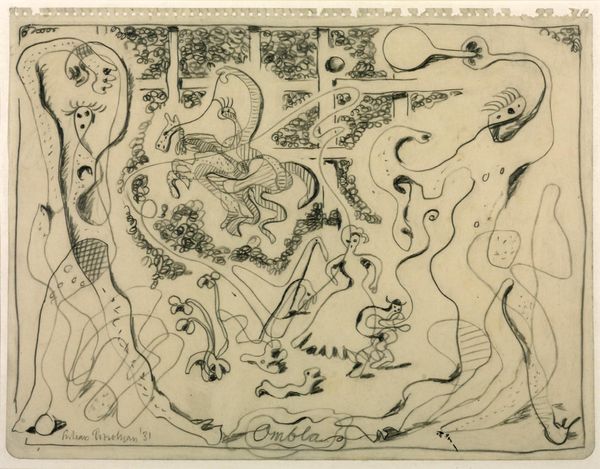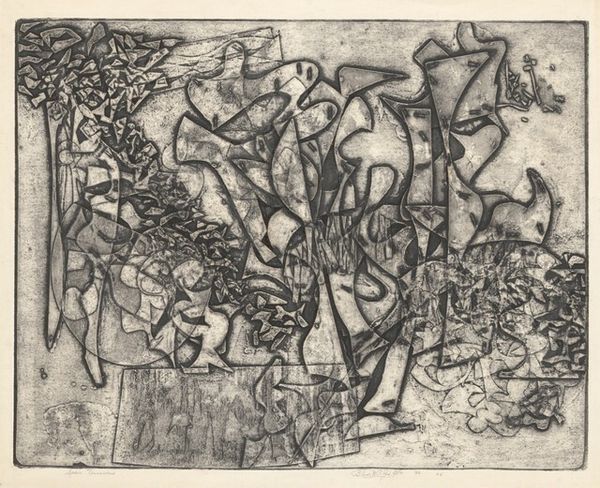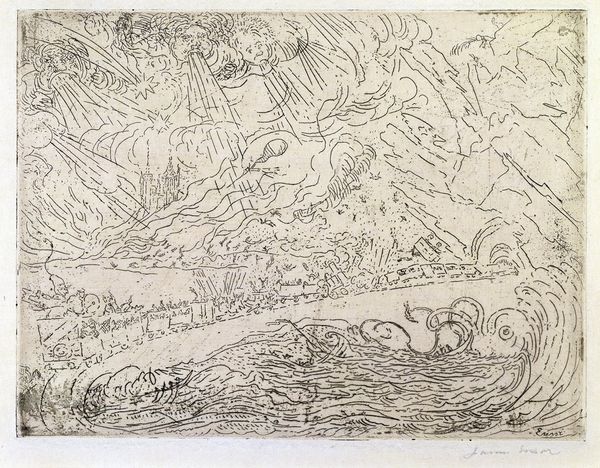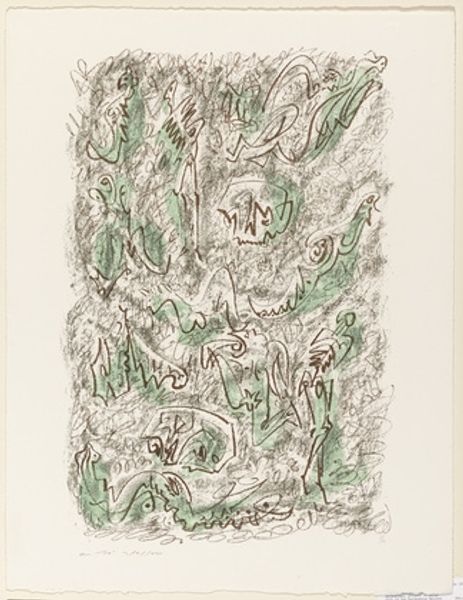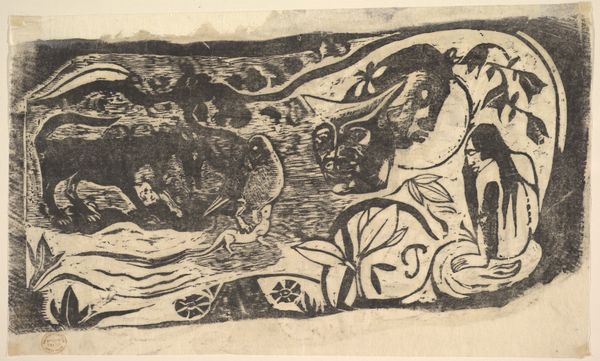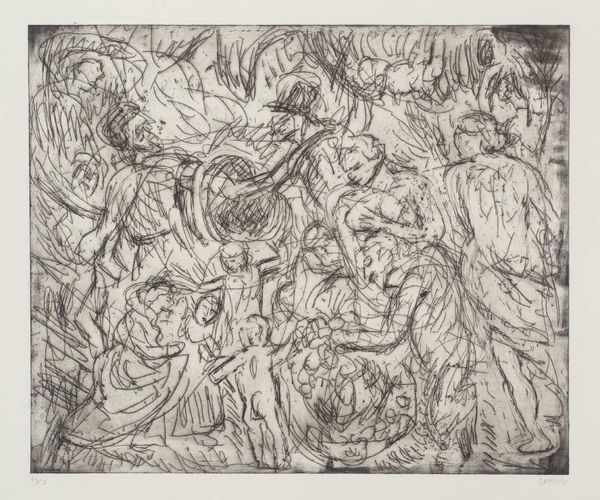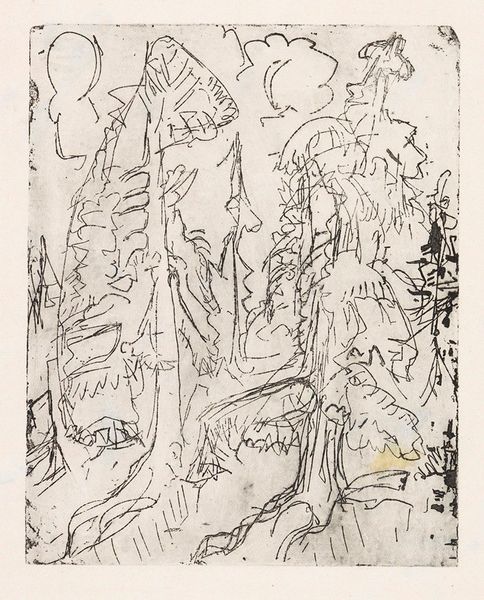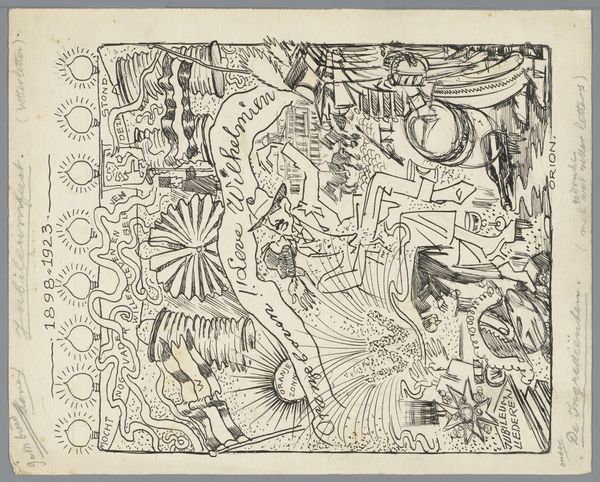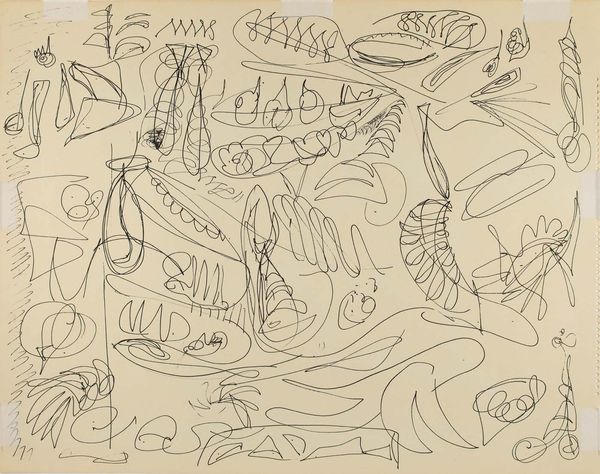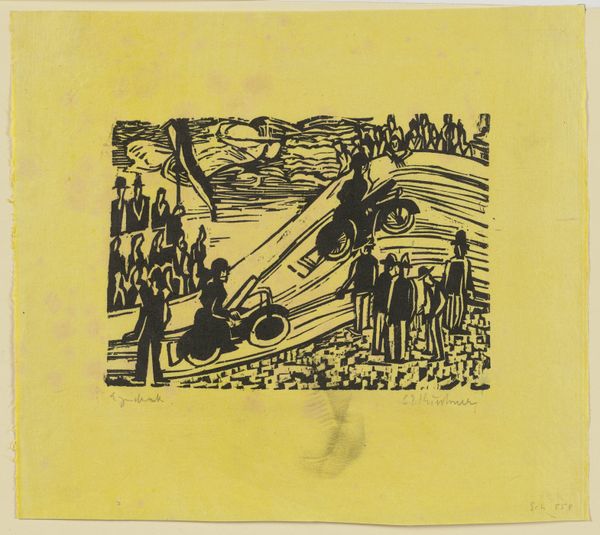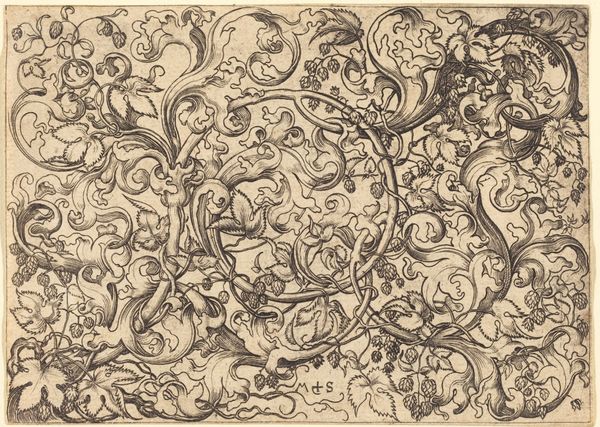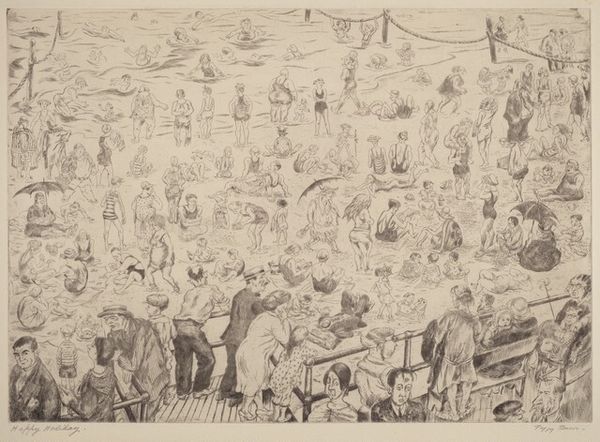
graphic-art, print, linocut, ink
#
graphic-art
# print
#
linocut
#
ink
#
linocut print
#
geometric
#
abstraction
Copyright: Pierre Alechinsky,Fair Use
Curator: This is Pierre Alechinsky's 1967 linocut print, "Bird's Eye View of the Sea". Editor: It feels chaotic, a swirling vortex of blues against a stark white backdrop. The lines create a sense of restless energy, almost overwhelming. Curator: Indeed. Alechinsky, known for his association with the Cobra group, often infused his work with spontaneity and a calligraphic quality, moving away from rigid formalism and academic traditions. He was looking at ways of working against social norms that promote ideas around who and what can be accepted as worthy of visual space. Editor: The title suggests a detached, objective perspective, but the execution is so emotionally charged. The geometric forms are fighting for attention—do you think this tension represents something specific to its moment, perhaps anxieties around increasingly impersonal social systems? Curator: I see it as a more personal exploration of the subconscious, very typical of his era and artistic movement. The bird's eye view could be symbolic, indicating a yearning for detachment but, ultimately, the energy is far too overwhelming and internalized. And, while Alechinsky explored abstraction extensively, elements suggestive of natural forms, such as water, figures and faces are never truly abandoned. Editor: The medium, a linocut print, contributes to that nervous, raw quality as well. The gouged lines are thick and uneven, imbuing the scene with an unsettling vitality. This challenges the common definition of "abstraction" because, even as something formless, this evokes meaning. Curator: He sought to activate a deeper visual understanding. Remember, the late 60s witnessed various social uprisings—political activism, gender awareness. This art challenges viewers to be open to a new visual language, a form of visual activism against the artistic constraints of prior movements. Editor: You’re right; that frenetic energy feels aligned with the spirit of questioning and dissent present in that period. Perhaps that "detachment" isn't a goal but is actually commentary, recognizing what detachment looks like in times of deep personal awareness of systemic injustices. Curator: Looking at it through this lens has really refreshed my thinking on the piece, understanding Alechinsky as advocating a dynamic role for art and viewer. Editor: Mine as well. It reminds me to keep seeking new perspectives on both art and our rapidly changing world.
Comments
No comments
Be the first to comment and join the conversation on the ultimate creative platform.
